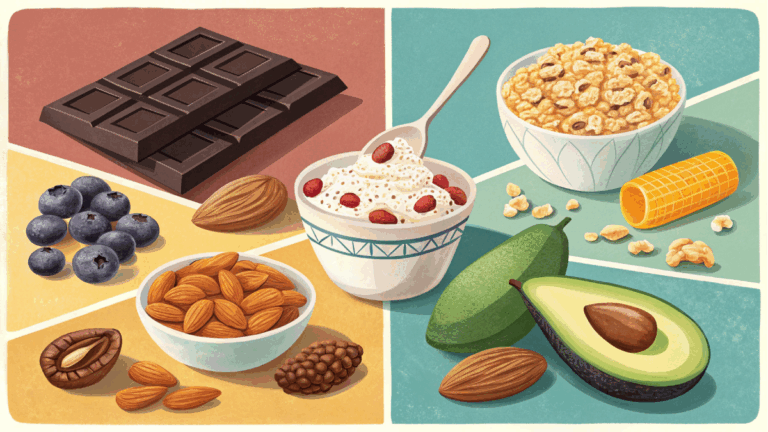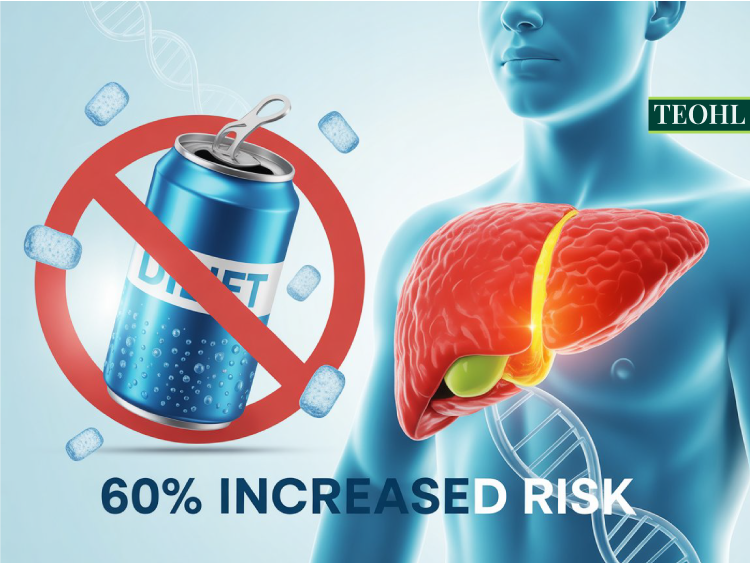Beat the Bloat: Your 7-Day Anti-Bloat Meal Plan That Actually Works

If you’re struggling with persistent bloating despite eating clean, this anti-bloat meal plan is exactly what you need. You’ve been hitting the gym religiously. As a result, your body fat is dropping and your muscles are more defined than ever. However, when you look in the mirror from the side, there’s still that rounded belly that makes you look like you’re hiding a basketball under your shirt.
Sound familiar?
Fortunately, this 7-day low-FODMAP reset will help you identify trigger foods, flatten your stomach, and finally reveal the physique you’ve worked so hard to build—all while eating satisfying, nutritious meals.
Here’s the truth: bloating doesn’t discriminate. In fact, it affects fitness enthusiasts just as much as anyone else—maybe even more so. The reason is simple: the leaner you get, the more noticeable that puffed-up midsection becomes.
What’s Really Causing Your Bloating
The culprit? It might not be what you’re eating too much of, but rather what you’re eating, period. Even the healthiest foods can turn your digestive system into a gas factory if your body struggles to process them properly.
Why Your “Healthy” Diet Might Be Causing Bloating
Let’s talk about FODMAPs—a group of carbs that many people find hard to digest. The acronym stands for Fermentable Oligosaccharides, Disaccharides, Monosaccharides, and Polyols. Basically, these are sugars and fibers that resist normal digestion.
How FODMAPs Trigger Bloating
When your gut can’t break down these compounds well, bacteria in your intestines feast on them instead. The result? Fermentation, gas production, inflammation, and that uncomfortable bloated feeling. Moreover, high-FODMAP foods also pull extra fluid into your intestines, which makes the bloating effect even worse.
The Hidden Culprits in Your Diet
Here’s what catches most people off guard: foods like apples, mushrooms, beans, garlic, and even some dairy products—all considered “healthy”—are loaded with FODMAPs. Therefore, if you’re sensitive to them, these nutritious options could be wreaking havoc on your digestive system and gut health.
The Anti-Bloat Meal Plan Solution: A Strategic Reset
The low-FODMAP approach was first developed by Australian researchers at Monash University in the early 2000s. Initially, it was designed to help people with Irritable Bowel Syndrome. However, it’s proven incredibly effective for anyone dealing with persistent bloating, regardless of whether they have IBS.
The Three-Phase Approach
This anti-bloat meal plan strategy unfolds in three distinct phases. First, you’ll reset your system. Then, you’ll identify your triggers. Finally, you’ll create a lasting plan.
Phase 1: The Clean Slate (1 Week)
To begin with, strip out all high-FODMAP foods to give your digestive system a complete break. During this reset period, inflammation settles and gas clears, which creates a baseline for the next phase.
Phase 2: The Detective Work (Several Weeks)
Next, slowly reintroduce high-FODMAP foods one at a time in small amounts. This helps you identify your personal trigger foods—the specific culprits causing your bloating. Meanwhile, keep portions modest and space out reintroductions so you can pinpoint exactly what bothers you.
Phase 3: Your Personalized Plan (Ongoing)
Finally, armed with knowledge about your triggers, you can now make informed choices. For instance, you might avoid certain foods entirely or simply limit them to occasions when bloating won’t be an issue.
Foods to Avoid in Your Anti-Bloat Meal Plan
During phase one of your anti-bloat meal plan, you’ll temporarily cut out several food groups. Although this may seem limiting at first, it’s necessary for the reset process.
High-FODMAP Foods to Eliminate
Problematic fruits: First, remove apples, pears, stone fruits like peaches and cherries, watermelon, and berries like raspberries.
Tricky vegetables: Similarly, avoid onions, garlic, cauliflower, Brussels sprouts, mushrooms, and asparagus.
Dairy troublemakers: Additionally, skip regular milk, ice cream, soft cheeses, and most yogurts.
Legume landmines: Furthermore, eliminate beans of all types, lentils, and chickpeas.
Grain offenders: Also, cut out wheat-based breads and pastas, plus rye and barley.
Sweetener suspects: In addition, avoid honey, agave, and sugar alcohols like sorbitol and xylitol.
Beverage backfires: Lastly, skip fruit juices, coconut water, and sodas with high-fructose corn syrup.
What You CAN Enjoy in This Bloat-Free Diet
The good news? There’s still plenty of delicious, nutritious food available in your anti-bloat meal plan. In fact, you’ll have more options than you might think.
Low-FODMAP Foods You’ll Love
Protein powerhouses: To start, all fresh meats, poultry, fish, and eggs are naturally low in FODMAPs.
Smart carb choices: Similarly, rice, oats, quinoa, corn, and gluten-free products provide solid energy.
Safe vegetables: Moreover, carrots, zucchini, spinach, lettuce, bell peppers, tomatoes, potatoes, and bok choy are all excellent choices.
Friendly fruits: Likewise, citrus fruits, strawberries, cantaloupe, kiwi, and unripe bananas work great.
Dairy alternatives: Additionally, hard cheeses like cheddar and Parmesan, plus lactose-free milk and yogurt are safe options.
Nuts and seeds: Finally, most varieties work well, though you should go easy on cashews, pistachios, and large amounts of almonds.
Your Complete 7-Day Anti-Bloat Meal Plan
Here’s how to structure each day for maximum bloat-busting results with this proven anti-bloat meal plan. Each day includes balanced meals that are both satisfying and effective.
Day One: Starting Strong
Start with oatmeal made with lactose-free milk, then add protein isolate powder and top with blueberries and walnuts. Later, for your mid-morning snack, have rice cakes spread with natural peanut butter. At lunch, enjoy grilled chicken with quinoa and steamed vegetables. Afterward, your afternoon snack is lactose-free yogurt with strawberries. Finally, finish with baked salmon alongside roasted zucchini and brown rice.
Day Two: Building Momentum
Begin with a tomato and spinach omelet served with gluten-free toast. Next, snack on hard-boiled eggs. For lunch, prepare a turkey salad loaded with cucumber, peppers, and greens dressed in olive oil. Then, have a banana with almonds mid-afternoon. To end the day, dinner brings grilled steak, green beans, and mashed potatoes.
Day Three: Finding Your Rhythm
First, blend a smoothie using lactose-free milk, protein isolate, kiwi, and chia seeds. Later, snack on rice crackers with lactose-free cheddar. At midday, enjoy tuna salad for lunch with fresh vegetables. In the afternoon, have carrot sticks with low-FODMAP hummus. For dinner, savor roasted chicken thighs with root vegetables and polenta.
Day Four: Halfway There
To begin, make buckwheat pancakes topped with peanut butter and strawberries. Then, snack on lactose-free cottage cheese with blueberries. For lunch, try grilled shrimp over quinoa with fresh herbs. Afterward, have pumpkin seeds and an orange. Finally, turkey meatballs over gluten-free pasta round out the day.
Day Five: Staying the Course
Start with scrambled eggs with chives and sautéed zucchini. Next, lactose-free yogurt with kiwi makes a great snack. At lunch, enjoy grilled tofu with stir-fried bok choy over jasmine rice. Later, rice cakes topped with smoked salmon tide you over. For dinner, have pan-seared cod with sweet potato mash.
Day Six: Almost Done
First, prepare chia pudding with almond milk topped with raspberries and walnuts. Then, have hard-boiled eggs for snacking. At midday, enjoy a hearty chicken salad for lunch. Later, banana with peanut butter keeps you satisfied. To finish, beef stir-fry with peppers and bok choy over brown rice completes the day.
Day Seven: The Final Push
To conclude, oatmeal returns with lactose-free milk, protein powder, strawberries, and chia seeds. Next, cottage cheese with pumpkin seeds for snacking. At lunch, have grilled salmon with quinoa and zucchini. Afterward, carrot sticks with hummus make a perfect snack. Finally, finish strong with baked chicken breast, roasted root vegetables, and gluten-free couscous.
Additional Anti-Bloat Strategies to Maximize Results
To accelerate your bloat-busting progress while following this anti-bloat meal plan, you should also incorporate these simple yet effective strategies.
Hydration and Gut Health
First and foremost, drink plenty of water throughout the day to support healthy digestion. In addition, consider adding probiotic supplements or fermented foods to balance your gut bacteria. Furthermore, prioritize seven to nine hours of quality sleep each night. Equally important, find effective ways to manage stress, which significantly impacts digestion.
Smart Eating Habits
Moreover, skip sugar-free gum—it contains problematic sweeteners and causes you to swallow extra air. Instead, eat slowly and mindfully rather than rushing through meals. Also, reduce sodium intake to prevent water retention. After meals, take a brief walk to aid digestion.
Additional Lifestyle Tweaks
Beyond that, avoid carbonated drinks that introduce extra gas into your system. Alternatively, sip peppermint tea to soothe your digestive tract. Meanwhile, stay upright for at least an hour after eating. Most importantly, keep a food diary to track which foods correlate with symptoms.
Resources for Continued Success
For more guidance on healthy eating strategies and meal planning, check out our comprehensive nutrition guides. You can also explore fitness routines that support digestive health and browse our collection of healthy meal plans designed for active individuals.
The Bottom Line on Your Anti-Bloat Meal Plan
Bloating can hide even the most impressive body transformation, but it doesn’t have to be a lasting problem. In fact, by following this anti-bloat meal plan and carefully eliminating and then reintroducing foods, you can identify exactly what’s causing your digestive issues.
A Practical, Not Restrictive Approach
This isn’t about cutting out foods forever or following some extreme diet. Rather, it’s about understanding your body’s unique responses and eating in a way that supports both your fitness goals and digestive comfort.
What to Expect After One Week
Within just one week of following this reset plan, most people notice clear improvements. Specifically, they experience a significantly flatter stomach, better energy levels, and relief from that uncomfortable bloated feeling. As a result, the side view in the mirror finally matches the front view.
Take Action Today
So, give your gut this seven-day reset. Track how you feel and pay attention to the changes. Your body will thank you, and you’ll finally be able to show off all that hard work you’ve put in at the gym without a bloated belly getting in the way.
Ready to take your nutrition to the next level? Then explore our complete guide to gut health and discover more evidence-based meal plans that support your fitness journey.





